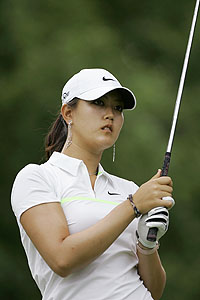Here's Annika's press conference.
ANNIKA SORENSTAM: I wanted to let you all know that. I feel like I have a responsibility to the LPGA, to my fans, and I wanted to announce it as early as I could.
The reason for this decision is that I have other priorities in my life. I have a lot of dreams that I want to follow, I want to live, and I'm getting married in January. Mike and I want to start a family. I want to continue to build the ANNIKA brand of businesses, and this includes my academy, my foundation, my golf course design projects, all my corporate relationships, hosting golf tournaments, clothing lines, etc.
I am very, very proud of what I've achieved. Golf has been great to me. I think I've achieved more than I ever thought I could. I have given it all and it's been fun.
I have come back from an injury, and I feel strong, I feel healthy, and the season has started really well, and I'm leaving the game on my terms.

















